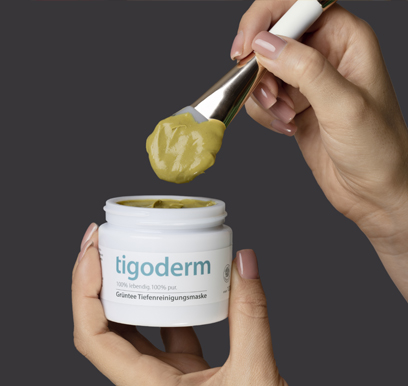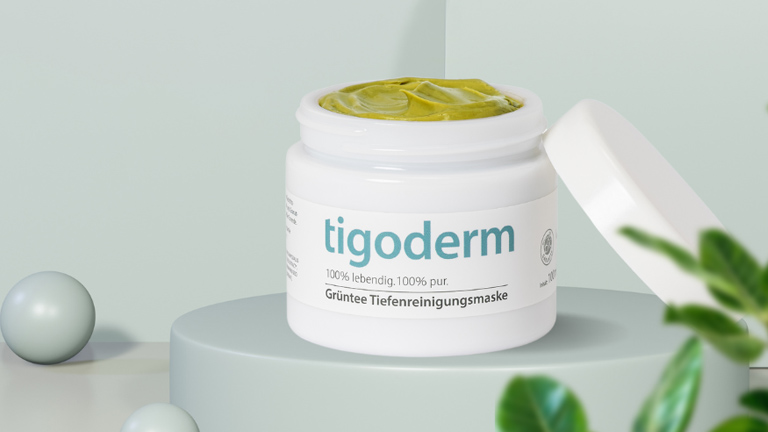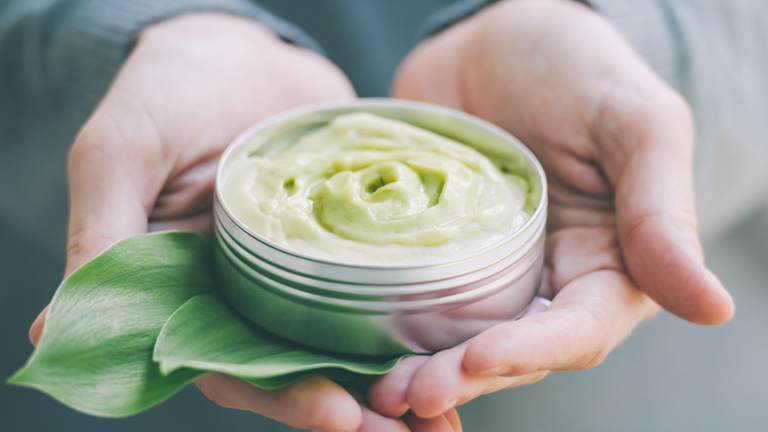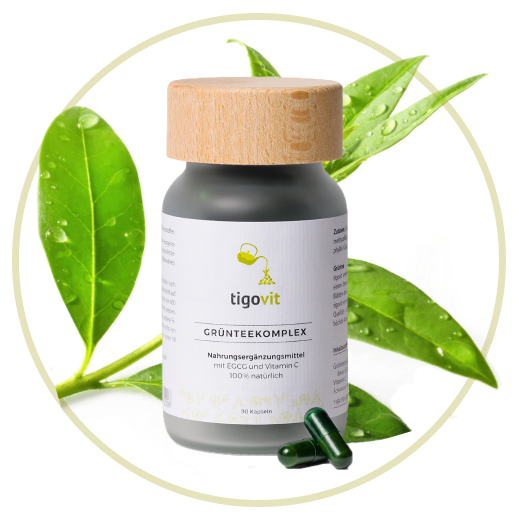Author: Nina Ebert, M.Sc. Biology
Our facial skin in particular is very sensitive due to external factors such as cold, heated air and dryness, sunlight, wind and weather, but also hormonal fluctuations, and requires special care. In order to prevent premature ageing of the skin and to gently support a radiant complexion in everyday life, the nourishing care of the facial skin through intensive treatments with special masks is an important part of regular facial care. Facial masks are enriched with suitable nutrients and antioxidants to support moisture, a radiant complexion, for skin redness and regeneration.
The choice of facial care products is growing endlessly, the advertising claims in particular are outdoing each other with anti-stress formulas, freshness boosters, true anti-ageing miracles, there are clay masks, activated charcoal masks, Green tea masks, cloth masks and many more - who still knows?
This article creates an overview of positive and negative ingredients in face masks as well as the appropriate application to facilitate the selection of the best face mask.
What do I look for when choosing the best face mask?
Avoid harmful preservatives & allergens
The basic rule for choosing the best face mask is: nothing should be put on the skin that we would not also eat. Especially transdermally, i.e. via the skin, substances are absorbed without the "diversions" via the intestines and liver, which is advantageous for useful antioxidants and nutrients and can develop protective properties. However, toxins, allergens and harmful substances such as parabens also enter our system directly. The following substances should therefore not be included:
- Parabens
for longer shelf life; can accumulate in the body and can influence hormone balance - Silicones
can clog the pores of the skin - Synthetic fragrances and perfume
potential allergens or eczema-promoting - Synthetic preservatives
- Artificial dyes
- Heavy metals such as arsenic, cadmium, lead
Cannot be seen via the list of ingredients, can only be identified by means of research
The Federal Office of Consumer Protection and Food Safety (BVL) regularly tests cosmetic products. Highly toxic arsenic was even detected in a healing clay mask. According to the BVL, there is no danger to consumers, but the value was above the level that is considered technically avoidable.
In a series of tests with 25 peel-off masks and mineral earth masks, toxic heavy metals such as cadmium, arsenic and lead were detected in some cases. Peel-off masks are cleansing masks that can be removed from the skin after the exposure time by means of the plastic polyvinyl alcohol they contain. Although the special polymer is water-soluble and is considered to be readily degradable, peel-off masks are repeatedly found by Stiftung Ökotest in tests to contain, in addition to polyvinyl alcohol, other plastic compounds that are difficult to degrade and can accumulate not only in the body but also in the environment and cause damage.
Natural cosmetics in first place
Extracts and substances from nature are the true helpers for sustainably healthy and radiant skin, which is always the right thing to do. According to Stiftung Ökotest, most of the Natural cosmetic masks with the verdict "very good" in the top places in tests. Ideally, the plant substances come from biologically controlled cultivation and bear an organic seal to ensure guaranteed freedom from pesticides and synthetic preservatives. The following plant extracts and plant oils are effective helpers in intensive care face masks:
- Aloe Vera: moisturising, soothing, cooling, clarifying
- Green tea extract: antioxidant protection, refreshing, vitalising, anti-inflammatory, antibacterial, good for reddened skin
- Pomegranate seeds: antioxidant, nourishing fatty acids
- Almond kernels: Soothing, balancing, nourishing fatty acids
- Hyaluronic acid: Skin's own building block, moisturiser and moisture reservoir, elasticity and firmness, wrinkle reduction
All substances are suitable for almost all skin types. They moisturise dry skin, provide regenerating intensive care for oily and greasy skin, clarify and cleanse problem skin with pimples and blackheads and provide natural nutrients for slower skin ageing and reduced wrinkles.
Possible applications
Cloth masks
The sheet masks are usually soaked in highly concentrated serums, and you don't need a cosmetic brush or your hands to massage them in. This type of mask is suitable for those who have little time and are looking for quick, uncomplicated application. However, beware of additives and preservatives: due to their highly concentrated formula, sheet masks in particular usually contain comparatively many harmful substances and allergens such as parabens, silicones, PEG (polyethylene glycol) and fragrances.
Another disadvantage of the sheet mask is the origin of the packaging. Mostly, these are foil-covered sachets made of plastic or aluminium, which can contain harmful polymers and are also usually not made of recycled material. In addition, sheet masks are classic disposable products that are disposed of after use and thus produce waste.
Peel-off masks

Are somewhat closer to the classic application of the cream mask, with the difference that they are applied in a thin layer to be peeled off in one after the exposure time. Dirt, sebum and skin flakes are thus to be removed with the mask. In order to form a film that can be removed after application, the synthetic polymer polyvinyl alcohol is usually used (see point 1).
Healing earth and mineral earth masks
Healing earth masks can be an effective application especially for acne, oily and oily skin. The minerals contained can extract unnecessary skin oil and pollutants and thus clear the skin's appearance. For dry and normal skin, however, a lot of moisture can be extracted. In addition, the application is somewhat cumbersome for many, as the powdered healing clay must first be mixed.
Cream masks

Slowly massaging in a classic cream mask is part of this application, making it an overall experience with a wellness factor. Cream masks made from plant oils and plant substances can naturally supply the skin with antioxidants, minerals and trace elements. The application time is usually 10 to 20 minutes and thus provides a regenerating time-out with additional deep care. When choosing the cream mask on ingredients such as green tea, aloe vera and almond oil. and avoids products with the above-mentioned additives, this is the right choice for every skin type.
Excursion green tea: The active ingredients of green tea in skin care
Several beauty and care effects are concealed in the Skin care formulas with green tea. Valuable nutrients are naturally contained in green tea, including antioxidants, especially the catechins such as EGCG, as well as enzymes, amino acids, B vitamins and trace elements.
Green tea extract for problematic and oily skin
Studies show that the green tea can help with mild inflammation and infections that cause blackheads and pimples. It can also reduce skin redness and treat extremely oily skin, especially by tightening pores. Its ingredients also slow down the secretion of sebum, naturally. Especially the application of a slow-acting face mask can show positive effects here in the long term.
Green Tea Polyphenols for Healthy Aging & Wrinkle Reduction
The in Catechins contained in green tea, especially EGCGhave positive effects on the reduction and first signs of skin ageing. Science proves that green tea polyphenols promote cell regeneration, which is particularly evident in the cells of the uppermost skin layer where the first wrinkles form. The antioxidant green tea polyphenols contribute to cell protection against free radicals caused by environmental influences such as heat, cold and sun, UV radiation and other cell stress and thus to a healthy, youthful skin appearance.
Green tea for dark circles
The tannins contained in green tea can help to reduce the blood vessels in the skin around the eyes. Puffiness and bags under the eyes, as well as dark skin appearances that become visible in the form of dark circles under the eyes, can be relaxed and reduced by the regular use of a green tea face mask.
Conclusion: Green tea face masks as a cream mask turns out to be an all-rounder

Green tea face masks are an insider tip in the Natural cosmetics and especially as a nourishing cream mask, a regenerating and vitalising wellness time-out for the face. The catechins contained, such as EGCG, are absolute multi-talents in terms of antioxidant protection, revitalisation, freshness and reduced wrinkle formation. In combination with soothing aloe vera and nourishing plant oils such as jojoba and almond oil, green tea face masks are probably the No. 1 on the market at the moment. They should be applied directly to the skin as a cream mask, without a cloth or peel-off method, in order to exclude possible additives from the outset. Ideally, all ingredients come from certified organic cultivation, are produced without genetic engineering and no preservatives, dyes or additives are used. A good product can be used every day, but also as needed as a special intensive treatment 2-3 times a week. To let the environment have its say, it makes sense to avoid disposable sachets and rather use tubes and jars.
Source:
www.oekotest.de
https://www.ncbi.nlm.nih.gov/pmc/articles/PMC5384166/
https://pubmed.ncbi.nlm.nih.gov/28343910/
https://www.ncbi.nlm.nih.gov/pmc/articles/PMC5796122/
https://pubmed.ncbi.nlm.nih.gov/29316635/




